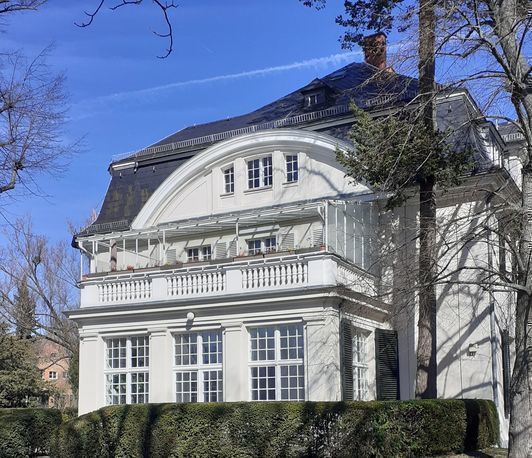Towards State- and Time-Resolved Fluorescence Spectroscopy of Trapped Molecular Ions
- MP Department Seminar
- Date: Jan 15, 2024
- Time: 11:00 AM c.t. - 12:00 PM (Local Time Germany)
- Speaker: Jascha Lau
- Otto-Hahn Awardee of the Biological and Medical Section of the MPG and new Group Leader in the Department of Molcecular Physics
- Location: Haber Villa
- Room: Seminar Room
- Host: Department of Molecular Physics

In this talk, I will give an overview of my postdoctoral and doctoral research, with a particular focus on anion photoelectron spectroscopy and infrared fluorescence spectroscopy, as well as the future research direction of my Otto Hahn Group in the Department of Molecular Physics, which will revolve around fluorescence spectroscopy of trapped molecular ions.
The first part of the talk will focus on a recently developed photoelectron spectroscopy technique (IR-cryo-SEVI), which provides vibrationally resolved spectra for molecular anions that are selectively vibrationally excited prior to photodetachment [1]. Applications of this technique to the vinoxide (H2CCHO−) and nitrate (NO3−) anions will be presented. The vinoxide spectra provide detailed vibrational state-specific information on anharmonic coupling and report on neutral vibrations that are not normally accessible with photoelectron spectroscopy [2]. Similarly, the nitrate spectra give access to the degenerate N-O stretching ( ) vibration of neutral NO3. For this mode, extensive vibronic coupling in the NO3 ground state has so far prevented the unambiguous assignment of the fundamental level to one of two significantly different frequency values (1050 vs. 1490 cm−1) [3]. IR-cryo-SEVI spectra obtained after pre-excitation, on the other hand, are in clear agreement with only one of these assignments. In addition, infrared fluorescence experiments based on superconducting nanowire single-photon detectors (SNSPDs) will be briefly discussed in terms of the potential of SNSPDs for fluorescence detection in ion traps [4].
In the second part, the role of UV/Vis and infrared fluorescence for radiative cooling and spectral signatures of molecules in the interstellar medium will be highlighted. I will discuss how the above-mentioned techniques can be combined in a new experimental setup that will be designed to measure dispersed emission spectra and state-resolved emission rates of trapped molecular ions. Since direct measurements of radiative lifetimes and emission spectra under astronomically relevant conditions are not available for most molecules, the proposed experiment will help to explore the role of radiative emission in the formation and detection of interstellar molecular species.
[1] D. M. Neumark, J. Phys. Chem. A 127, 4207−4223 (2023).
[2] J. A. Lau et al., J. Phys. Chem. A 127, 3133–3147 (2023).
[3] J. F. Stanton, J. Mol. Spectrosc. 389, 111690 (2022).
[4] J. A. Lau et al., Chem. Soc. Rev. 52, 921-941 (2023).